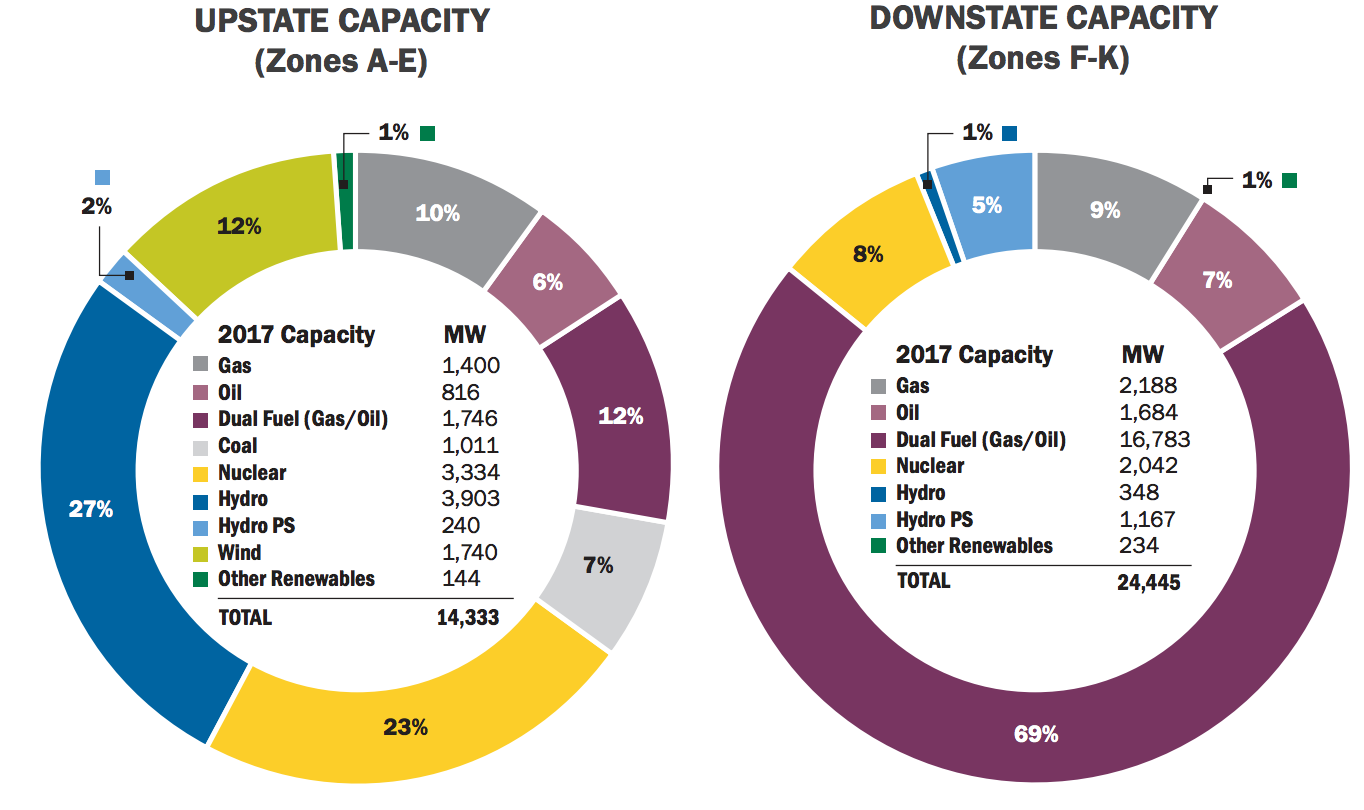By Janis Kreilis
New York City has the demand. Upstate has the supply. But transmission constrains the flow between the two, increasing emissions. Additional investments here could go a long way towards helping New York meet its climate goals.
Last week, New York Governor Andrew Cuomo announced a $1.5-billion Clean Climate Careers initiative through which the state aims to procure 2.5 million MWh of renewable energy per year while generating 40,000 jobs by 2020.
The program – “the largest clean energy procurement by a state in U.S. history,” as the governor put it – was proposed after President Trump made public his intention to withdraw the country from the UN Paris climate accord.
According to the requests for proposals, New York State Energy Research and Development Authority and the New York Power Authority (NYPA) will procure energy generated by wind, solar, small and large-scale hydro, fuel cell and technologies. NYPA aims to add 125 MW of solar on the roofs of public buildings, which would treble such capacity at public facilities. The plan also aims to create apprenticeships for local construction workers through Public Work projects.
Some critics, such as the fiscally conservative think tank The Empire Center for Public Policy, have complained about the plan as a way to subsidize solar and wind at the expense of ratepayers instead of importing cheap energy from Quebec’s hydro plants.
Although this sounds sensible in theory, getting energy into where it’s most needed – New York City and its surroundings – is already difficult, to the extent that NYISO annual “Power Trends” report, released in mid-May, called the state’s electric system “a tale of two grids.”
Simply put, New York’s grid is highly asymmetric. New York City and downstate areas consume about two-thirds of all electricity in the state, while upstate produces the most energy. More importantly, generation upstate is relatively clean thanks to a large number of hydro, nuclear, and wind plants. Unfortunately, this energy can hardly reach the consumers downstate due to transmission concerns. The result is a relatively dirty grid downstate, comprised mostly of oil or gas-fired dual-fuel generators.

Even if New York would build wind and solar farms upstate to get to New York’s goal of procuring 50% of its energy from renewables by 2030, the grid needs upgrades to deliver that energy to where it is needed most. According to NYISO, the transmission lines will not be able to handle the forecasted growth in generation upstate.
NYISO has proposed differentiating incentives for renewables so as to bring more renewables to the downstate areas. New transmission projects are ongoing but these take time even when developed within the existing rights of way, and more will be necessary, says NYISO.
The tale of two grids also means a tale of two markets – if the power upstate cannot get to the consumers downstate, its relative abundance upstate is pushing down the wholesale prices and jeopardizing the future of plants that are needed for reliability, including two nuclear facilities, which New York has chosen to subsidize for their zero-emission attributes.
According to NYISO, the time to act is now. While New York is spending record-breaking sums of money on generation, it would be wise to invest some part of it in transmission. After all, clean energy is of little use unless it can reach the power outlet.

